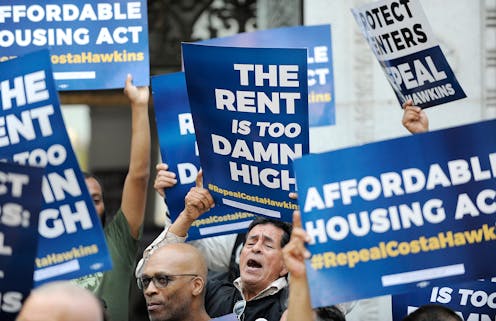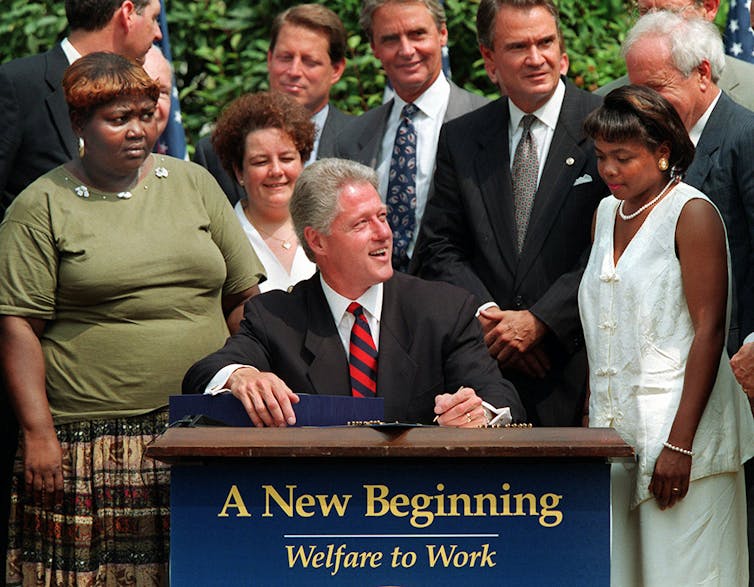Ben Carson's effort to 'reform' housing safety net would deepen poverty by hurting poorest Americans
The administration's proposed changes to a decades-old housing program supporting the poorest Americans would jack up rents and deepen poverty in the US.

The Trump administration recently proposed fundamental changes to how the federal government helps low-income families pay for housing.
Housing and Urban Development Secretary Ben Carson claims his “welfare reform,” which would jack up rents on the poorest Americans and impose stricter work requirements, would promote self-sufficiency and make federal housing assistance fiscally sustainable.
As someone who has studied, taught and written about housing policy for more than 25 years, I believe the proposal would do nothing of the kind.
Housing welfare, by the numbers
About 4.8 million of the nation’s lowest-income households currently receive housing assistance from the federal government, a figure that hasn’t changed much over the past decade.
About 1 million households live in public housing, 2.5 million receive housing choice vouchers that subsidize the rents charged by private landlords and 1.3 million live in apartment buildings that are themselves directly supported by the government.
These households earn very little income. The average income of a housing choice voucher recipient, for example, is US$14,454, while only 23 percent earn more than $20,000.
For decades, federal rental assistance ensured that recipients paid no more than 30 percent of their adjusted household income on rent. If income goes down, they pay less. If it goes up, they pay more. The cap is based on the notion, long shared by policymakers and the real estate industry, that housing is “affordable” when it costs no more than 30 percent of a household’s income.
The measure for income housing authorities have used has traditionally been adjusted for child care, medical expenses and other deductions.

Housing ‘reform’
The administration’s proposal would greatly raise the rents that virtually all housing subsidy recipients must pay – in three ways.
The rents for subsidy recipients who are not elderly or disabled would increase from 30 to 35 percent of their income. The government would no longer take child care and medical expenses into account in determining rents. And the minimum rent recipients must pay would triple from $50 to $150 a month.
About 423,000 subsidy recipients currently earn less than $2,000 a year and pay the minimum rent of $50. Their rent would triple to $150 a month, which would consume a whole year of income for a household earning $1,800.
Families with higher incomes would also see sharp increases as well. A single-parent family earning $25,000 but with $5,000 in child care expenses would see its rent jump 46 percent from about $500 to $729.
While the plan would keep elderly and disabled people at a 30 percent cap, their incomes would no longer by adjusted for medical expenses and child care. Moreover, in order to qualify for the exemption, every adult in the household must be elderly or disabled.
A history of ‘reform’
Most fundamentally, the Trump administration proposal would finally apply the controversial welfare “reforms” that began in the 1990s to federal housing assistance.
Welfare reform began under the Clinton administration, which in 1996 replaced a decades-old entitlement program that provided aid to poor families with kids with a new one that included work requirements and time constraints. As a result, the number of families on welfare plunged from 4.5 million in 1996 to 1.1 million last year.
The Trump administration has been pushing to extend work requirements and sometimes time limits to other safety net programs, such as Medicaid and food stamps. And now, with the latest proposal, the administration hopes to apply them to housing assistance.
Although the details are yet to be worked out, the administration’s bill would authorize public housing authorities and private owners of subsidized housing to impose work requirements and time limits – and even increase some rents above 35 percent of income.

Wider ramifications
While some policy analysts have previously advocated that Washington apply time limits and work requirements to housing assistance, these ideas have generally not taken hold. There are good reasons for this.
The United States confronts a housing affordability crisis of epic proportions. By the standard 30 percent of income measure, nearly half of all renters cannot afford their housing, and one-quarter spend at least half of their income on rent.
The problem is far worse among very low-income renters, with 83 percent spending more than 30 more percent of their income on rent and 56 percent spending 50 percent or more. With cost burdens like these, people often struggle to pay for food, transportation, health care and other essentials. They are at high risk of eviction and homelessness.
Employment is often of little help. About half of the 8 million very low-income renters who spend 50 percent or more of their income on rent do in fact work. In only 12 of the nation’s 3,142 counties can a full-time worker earning the minimum wage afford a one-bedroom home at the local fair market rent – the rent that the Housing and Urban Development department deems suitable for a modest but adequate unit.
And average full-time earnings in numerous occupations are also well below the income necessary to afford the fair market rent. For example, a child care worker in the U.S. earns an average of $30,679, compared with the $35,680 necessary under the 30 percent standard to afford the national average fair market rent on a one-bedroom unit.
Another reason welfare reform’s emphasis on employment makes little sense for housing assistance is that most subsidy recipients who could work already do. Overall, 28 percent of all housing assistance recipients in 2017 worked. Two-thirds are either elderly or disabled. And most of the rest are single mothers, many of whom already work – and those who don’t often have young children.
Moreover, the cost of implementing work requirements would be substantial. Housing authorities would need to create new data systems and devote staff time to determine which subsidy recipients would be subject to the work requirements, to monitor compliance with the requirements and impose sanctions when the requirements are not satisfied.
In short, the proposed changes in federal housing policy would neither foster economic self-sufficiency nor meaningful fiscal savings. They would deepen poverty and worsen the housing affordability crisis.
Alex Schwartz is a member of the National Low Income Housing Coalition and is related to a staff member of The Conversation US.
Read These Next
From truce in the trenches to cocktails at the consulate: How Christmas diplomacy seeks to exploit s
World leaders like to talk up peace at Christmastime. But alongside the tales of seasonal breaks in…
The world risks forgetting one of humanity’s greatest triumphs as polio nears global eradication − 7
Polio may finally be defeated in the next 5 years. Will the world recognize what an extraordinary achievement…
Medieval peasants probably enjoyed their holiday festivities more than you do
The Middle Ages weren’t as dreary and desperate as you’d think, and peasants often had weeks of…





